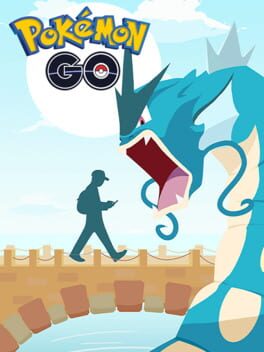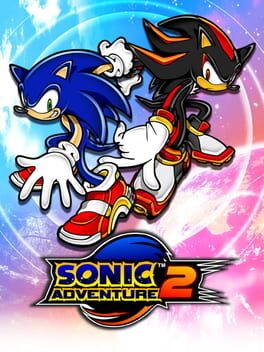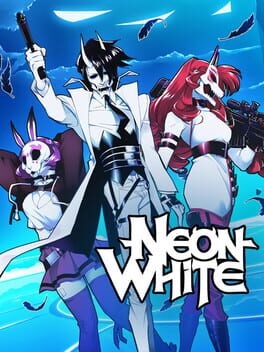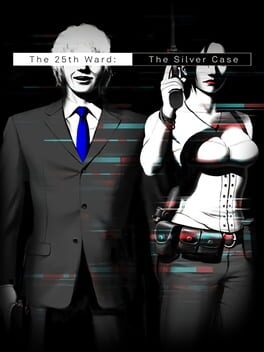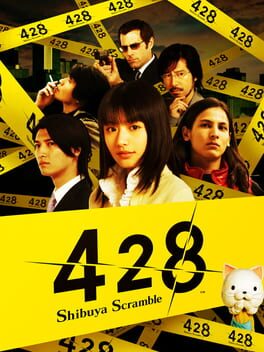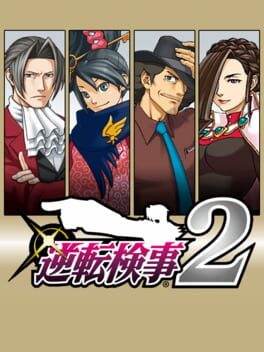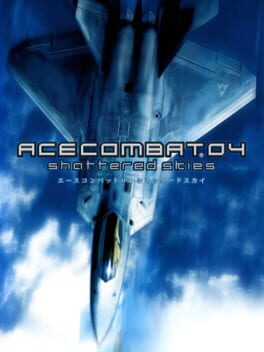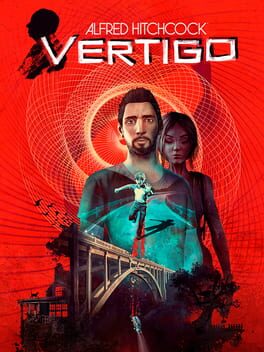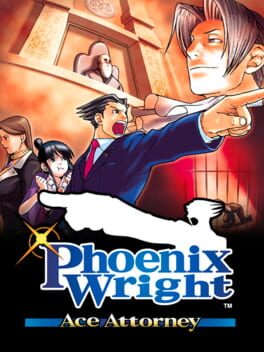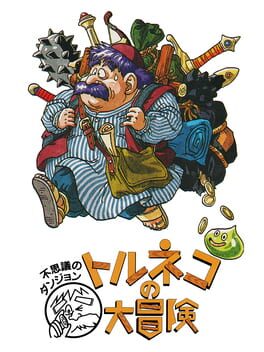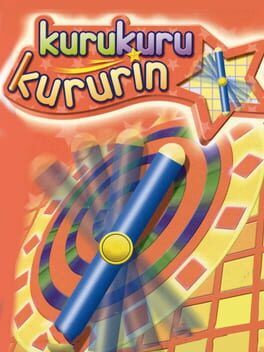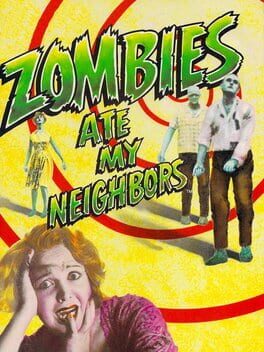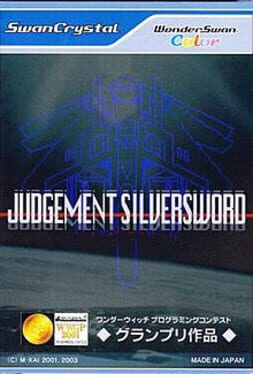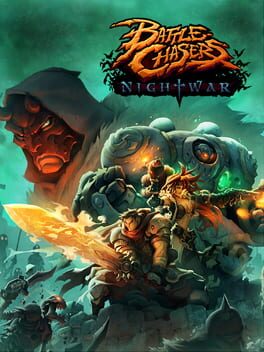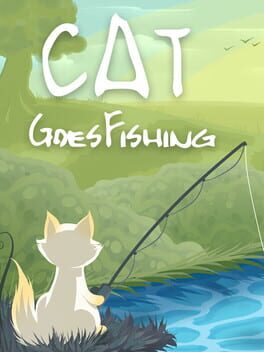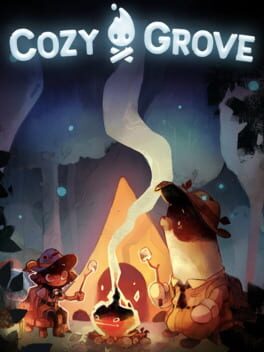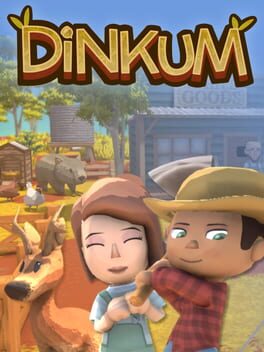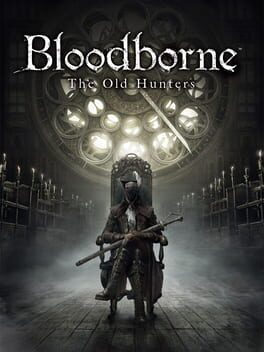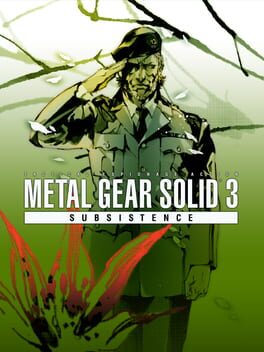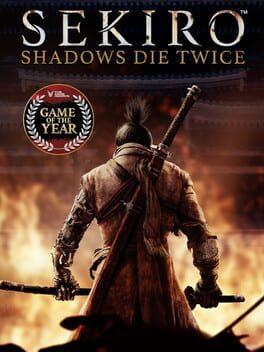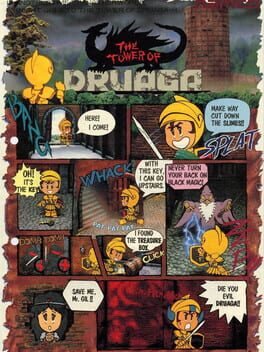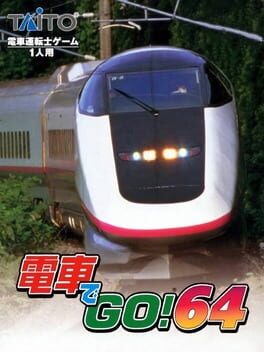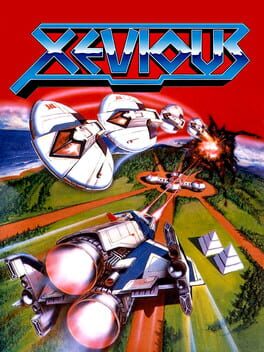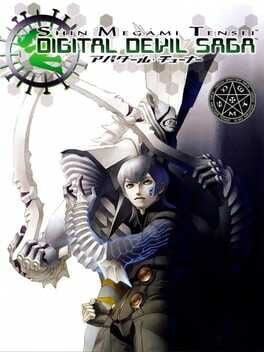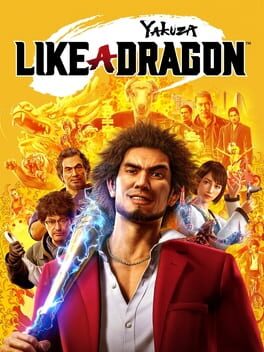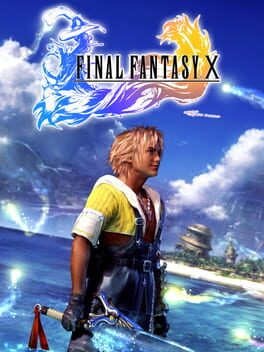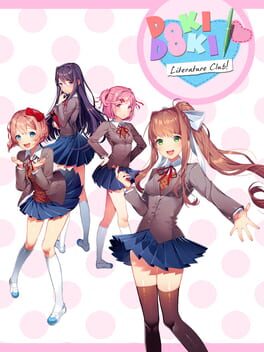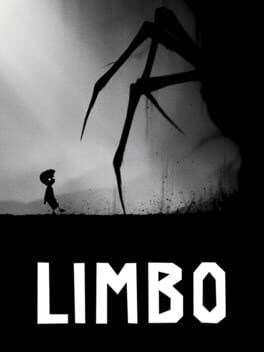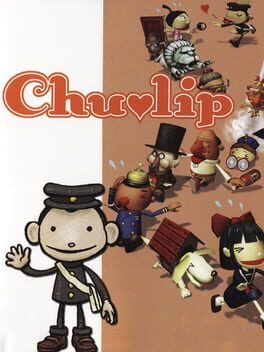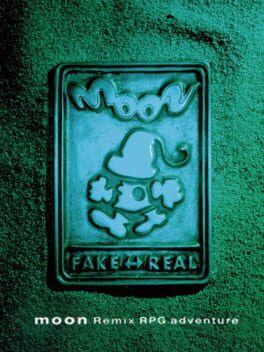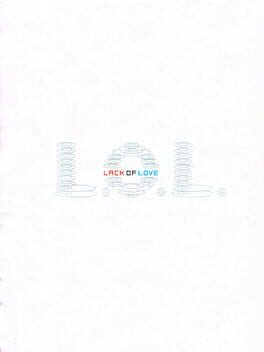Roganjoshua
70 reviews liked by Roganjoshua
Silent Hill 2
2001
Silent Hill 2
2001
Silent Hill 2
2001
in the days before resident evil 4, third-person shooters rarely followed a set framework for their mechanics, ranging from the auto-aim of syphon filter to the centered reticle of max payne to old-school resident evil's fixed camera angles and inability to move while firing. as a member of the survival horror subgenre of TPSs, silent hill 2 draws from the RE template while adding its own twists into the formula.
while protagonist james' background is never mentioned, we can assume he has formal combat training given his talent with an array of firearms as well as improvised weaponry. by pulling the right trigger, james enters an aiming stance where he will fix his sights on a nearby target. pressing the cross button at this point will cause james to discharge his gun, which can be repeated multiple times to inflict sequential damage on a target. however, attempting to fire with an empty clip will trap him in place while dry reloading. the player must carefully count their ammo usage in the chaos of combat in order to avoid this occurance and safely reload from the inventory menu.
much like this game's ps1 predecessor, james has access to three different types of firearms. the first is the pistol, which provides high manueverability in exchange for low firepower. the shotgun is the middle tier weapon, as it seems to be a semi-automatic with the ability to fire off six shells in succession, but it has a notable amount of recoil. this weapon is designed in an unorthodox fashion compared to its contemporaries, where spread of the shotgun is rather focused and thus is mainly used for blowing enemies back at close range. finally, the rifle provides the highest firepower in exchange for heavy recoil, sluggish recovery time, and low ammo capacity. this weapon sees the most use in slower boss battles, where the damage output becomes a necessity. the tradeoffs between each of these create dynamism in each encounter, where weapon selection becomes as important as actually disposing of enemies. this is unfortunately undercut by the generous amount of ammo for each weapon, making resource conservation less of a focus. however, the ammo allotment is tightly designed such that players can't simply run into battle willy-nilly with the rifle: certain enemies naturally counteract each weapon based on their own behaviors, attack patterns, and agility, and many fights will need to be conducted with the handgun to ensure that precious rifle ammo isn't needlessly wasted on enemies that can easily avoid its shots.
ranged combat dominates much of the latter half of the game, but james enters into silent hill with no equipment and must conduct on-site procurement a la konami's other famous playstation franchise metal gear solid. given the barren state of the town, james must make do with both a wood plank and a steel pipe as he slowly builds up his arsenal of weaponry. the game's biggest enhancement over the original silent hill is its evolution of its melee mechanics. for example, silent hill 2 deftly weaves in the pressure-sensitive buttons of the ps2 in order to differentiate between two types of close-ranged attacks. softly holding the cross button creates gentler, more strategic blows, such as the plank's walking swing and the pipe's lunge. these attacks can be used to overwhelm opponents in order to stagger them for the heavier melee strike. by forcefully pressing the button, james will unleash an nasty overhead capable of quickly downing enemies. developing an understanding of how to correctly manipulate the pressure sensor in order to use each move at will goes a long way in terms of enriching james' arsenal. melee weapons also have one important upside over their ranged brethren: they allow the player to block attacks by holding the square button when standing still. silent hill 3 would extend this to a universal parry, but silent hill 2's implementation feels natural and easy to use in the heat of battle. while these options become less consequential as the game extends into the second half, they do reward those who prefer to stay up close and personal by rewarding james with the giant knife. this hefty blade betrays the developer's japanese side by calling to mind such classic weapons such as cloud's buster sword or guts' ferocious dragon slayer.
there's one other primary attack that must be mentioned: the stomp. by pressing the cross button without aiming over a downed enemy, james will coup de grâce his opponent with a deadly heel strike to the head. this iconic technique is a series staple, and it presages similar attacks that would appear in later games of its ilk such as resident evil 5 and dead space. while in the original resident evil games zombies would often rise up after briefly tasting carpet, the effect was primarily to catch unsuspecting or overeager players unawares when they hadn't quite finished off their foe as well as offering the chance to run by to those low on ammo. in silent hill's case, stomping a downed enemy is the primary way of killing most targets due to the speed of its use compared to simply filling an opponent full of lead. this is especially important for the lying figure enemies, who can deal major damage by scrambling from a fallen state. the average enemy will be able to arise multiple times if left unaccounted for, forcing stomps as a necessity for those hoping to cleanly end encounters. this is especially apparent in group encounters, where other enemies may cut off downed ones from james' approach. in these cases crowd control becomes integral to survival, as the player must prioritize enemies with enough space around them that james can run up to them and stomp them upon toppling them without getting side-swiped by another enemy along the way. when the player has a better grasp of the combat, they may line up enemies in such a fashion that they inadvertently strike one another thanks to the game's friendly fire, potentially toppling or staggering them with minimal input from the player. these nuances make silent hill 2 more than just blindly firing at enemies when it's at its best in terms of encounter design.
as for enemies, the game primarily cycles between three: the lying figure, the mannequin, and the nurse. the lying figure slowly approaches james upon seeing him, emitting an acid spray when james comes into range. the mannequin meanwhile remains in a random position until james comes into range, flailing wildly with its appendages at any provocation from the player. finally, the nurse menacingly struts towards james upon seeing him, swingingly carelessly with a steel pipe at anyone in the vicinity. all three of these require a delicate understanding from the player of their general health pool, behavior in close quarters, and primary weapon of choice for dispatching them. it's unfortunate that the lying figures end up becoming too frequently utilized, especially in the labyrinth zone, which diminishes the impact of the nurses in particular, who rarely show up once james enters the historical society. various other enemies such as the grate-swinging mandarins and the abstract daddies with their devastating command grab show up sparingly as well.
boss fights are not puzzle-based in any way and instead primarily require the player to put distance between james and the boss, fire off shots, and then run for safe territory. while not terribly interesting, bosses in general were rarely well-designed at this point of third-person shooter history. of these, pyramid head is certainly the most notable given his timer-driven boss fights where shots scored on his metallic helmet reduce the amount of time until he leaves the area. other bosses require more finesse, such as eddie and his game of cat-and-mouse in a meat locker between frozen cadavers. skilled players will find that with tight execution they can perform a stunlock on him by using the rifle's shot to stagger him and then following up with rifle shots repeatedly until the fight ends. while most strategies for these fights feel rote, there are certainly ways for astute players to develop novel strategies for them. the major downside to some bosses who reside in larger arenas is that the camera is unable to keep track of them given that it centers on james at all times. this certainly isn't a game-breaker thanks to james being able to automatically aim at off-screen enemies when facing in their direction, but it does make positioning considerations rather awkward.
as a hallmark of the playstation 2's early action lineup, silent hill 2 provides one of the most focused gun-toting romps of the early 00s. it's hard to compare it directly to those that followed in its wake given the modern focus on stick-driven aiming and over-the-shoulder viewpoints, but parallels can be drawn between its synergy between melee and ranged combat and its positioning-focused combat encounters to modern shooters, whether they derive from survival horror antecedents or not. aspects of it have aged poorly such as the awkward camera controls and the lack of enemy variety, which may put off players more used to today's iterations of these genre conventions. however, the simple viscerality of the firing mechanics and small weapon pool combined with the tactics involved with positioning and weapon selection lend the game an arcade-like quality that has been lost in modernity. revisiting these games is vital for understanding the development of this incredibly popular genre today.
while protagonist james' background is never mentioned, we can assume he has formal combat training given his talent with an array of firearms as well as improvised weaponry. by pulling the right trigger, james enters an aiming stance where he will fix his sights on a nearby target. pressing the cross button at this point will cause james to discharge his gun, which can be repeated multiple times to inflict sequential damage on a target. however, attempting to fire with an empty clip will trap him in place while dry reloading. the player must carefully count their ammo usage in the chaos of combat in order to avoid this occurance and safely reload from the inventory menu.
much like this game's ps1 predecessor, james has access to three different types of firearms. the first is the pistol, which provides high manueverability in exchange for low firepower. the shotgun is the middle tier weapon, as it seems to be a semi-automatic with the ability to fire off six shells in succession, but it has a notable amount of recoil. this weapon is designed in an unorthodox fashion compared to its contemporaries, where spread of the shotgun is rather focused and thus is mainly used for blowing enemies back at close range. finally, the rifle provides the highest firepower in exchange for heavy recoil, sluggish recovery time, and low ammo capacity. this weapon sees the most use in slower boss battles, where the damage output becomes a necessity. the tradeoffs between each of these create dynamism in each encounter, where weapon selection becomes as important as actually disposing of enemies. this is unfortunately undercut by the generous amount of ammo for each weapon, making resource conservation less of a focus. however, the ammo allotment is tightly designed such that players can't simply run into battle willy-nilly with the rifle: certain enemies naturally counteract each weapon based on their own behaviors, attack patterns, and agility, and many fights will need to be conducted with the handgun to ensure that precious rifle ammo isn't needlessly wasted on enemies that can easily avoid its shots.
ranged combat dominates much of the latter half of the game, but james enters into silent hill with no equipment and must conduct on-site procurement a la konami's other famous playstation franchise metal gear solid. given the barren state of the town, james must make do with both a wood plank and a steel pipe as he slowly builds up his arsenal of weaponry. the game's biggest enhancement over the original silent hill is its evolution of its melee mechanics. for example, silent hill 2 deftly weaves in the pressure-sensitive buttons of the ps2 in order to differentiate between two types of close-ranged attacks. softly holding the cross button creates gentler, more strategic blows, such as the plank's walking swing and the pipe's lunge. these attacks can be used to overwhelm opponents in order to stagger them for the heavier melee strike. by forcefully pressing the button, james will unleash an nasty overhead capable of quickly downing enemies. developing an understanding of how to correctly manipulate the pressure sensor in order to use each move at will goes a long way in terms of enriching james' arsenal. melee weapons also have one important upside over their ranged brethren: they allow the player to block attacks by holding the square button when standing still. silent hill 3 would extend this to a universal parry, but silent hill 2's implementation feels natural and easy to use in the heat of battle. while these options become less consequential as the game extends into the second half, they do reward those who prefer to stay up close and personal by rewarding james with the giant knife. this hefty blade betrays the developer's japanese side by calling to mind such classic weapons such as cloud's buster sword or guts' ferocious dragon slayer.
there's one other primary attack that must be mentioned: the stomp. by pressing the cross button without aiming over a downed enemy, james will coup de grâce his opponent with a deadly heel strike to the head. this iconic technique is a series staple, and it presages similar attacks that would appear in later games of its ilk such as resident evil 5 and dead space. while in the original resident evil games zombies would often rise up after briefly tasting carpet, the effect was primarily to catch unsuspecting or overeager players unawares when they hadn't quite finished off their foe as well as offering the chance to run by to those low on ammo. in silent hill's case, stomping a downed enemy is the primary way of killing most targets due to the speed of its use compared to simply filling an opponent full of lead. this is especially important for the lying figure enemies, who can deal major damage by scrambling from a fallen state. the average enemy will be able to arise multiple times if left unaccounted for, forcing stomps as a necessity for those hoping to cleanly end encounters. this is especially apparent in group encounters, where other enemies may cut off downed ones from james' approach. in these cases crowd control becomes integral to survival, as the player must prioritize enemies with enough space around them that james can run up to them and stomp them upon toppling them without getting side-swiped by another enemy along the way. when the player has a better grasp of the combat, they may line up enemies in such a fashion that they inadvertently strike one another thanks to the game's friendly fire, potentially toppling or staggering them with minimal input from the player. these nuances make silent hill 2 more than just blindly firing at enemies when it's at its best in terms of encounter design.
as for enemies, the game primarily cycles between three: the lying figure, the mannequin, and the nurse. the lying figure slowly approaches james upon seeing him, emitting an acid spray when james comes into range. the mannequin meanwhile remains in a random position until james comes into range, flailing wildly with its appendages at any provocation from the player. finally, the nurse menacingly struts towards james upon seeing him, swingingly carelessly with a steel pipe at anyone in the vicinity. all three of these require a delicate understanding from the player of their general health pool, behavior in close quarters, and primary weapon of choice for dispatching them. it's unfortunate that the lying figures end up becoming too frequently utilized, especially in the labyrinth zone, which diminishes the impact of the nurses in particular, who rarely show up once james enters the historical society. various other enemies such as the grate-swinging mandarins and the abstract daddies with their devastating command grab show up sparingly as well.
boss fights are not puzzle-based in any way and instead primarily require the player to put distance between james and the boss, fire off shots, and then run for safe territory. while not terribly interesting, bosses in general were rarely well-designed at this point of third-person shooter history. of these, pyramid head is certainly the most notable given his timer-driven boss fights where shots scored on his metallic helmet reduce the amount of time until he leaves the area. other bosses require more finesse, such as eddie and his game of cat-and-mouse in a meat locker between frozen cadavers. skilled players will find that with tight execution they can perform a stunlock on him by using the rifle's shot to stagger him and then following up with rifle shots repeatedly until the fight ends. while most strategies for these fights feel rote, there are certainly ways for astute players to develop novel strategies for them. the major downside to some bosses who reside in larger arenas is that the camera is unable to keep track of them given that it centers on james at all times. this certainly isn't a game-breaker thanks to james being able to automatically aim at off-screen enemies when facing in their direction, but it does make positioning considerations rather awkward.
as a hallmark of the playstation 2's early action lineup, silent hill 2 provides one of the most focused gun-toting romps of the early 00s. it's hard to compare it directly to those that followed in its wake given the modern focus on stick-driven aiming and over-the-shoulder viewpoints, but parallels can be drawn between its synergy between melee and ranged combat and its positioning-focused combat encounters to modern shooters, whether they derive from survival horror antecedents or not. aspects of it have aged poorly such as the awkward camera controls and the lack of enemy variety, which may put off players more used to today's iterations of these genre conventions. however, the simple viscerality of the firing mechanics and small weapon pool combined with the tactics involved with positioning and weapon selection lend the game an arcade-like quality that has been lost in modernity. revisiting these games is vital for understanding the development of this incredibly popular genre today.
Silent Hill 2
2001
it is a really good joke, in retrospect, that james sunderland's silent hill is the easiest to deal with of any of them. even james' psychosexual torture purgatory coddles the crap out of him; at one point point in the midgame i had 11 health drinks, 14 first aid kits, and like 5 ampoules. i almost wanted to beg the game to stop giving me consumables, i felt nauseatingly overstuffed. things like that really sell this sadsack nega-wife guy shit as a grim spiritual joke rather than the heart of the narrative, which is centered in the peripheral cast. i won't say much about it because it's never worth spilling blood and tears on the page for games writing (to me) but angela is such a smartly written and well-understood character by the narrative (probably one of a handful of times mainstream games actually got "trauma" "right") and eddie's inferiority complex turned self loathing turned misanthropy turned paranoid violence hits a perfectttt balance between empathetic and uncomfortable. but enough said, there's nothing new to add here, really just another marker that i finished one of these games
edit: stray thought i wanted to write down so i don't forget it but it's funny that anyone could think downpour was trying anything new by addressing "the prison system" when this game literally has an extended sequence about prison as an occult torture maze built for exculpating authority structured by spatialized m.c. escher contortions of the logic of sin and absolution that runs laps around whatever ill-conceived green mile mike flanagan prestige tv shit was going on in that game
edit: stray thought i wanted to write down so i don't forget it but it's funny that anyone could think downpour was trying anything new by addressing "the prison system" when this game literally has an extended sequence about prison as an occult torture maze built for exculpating authority structured by spatialized m.c. escher contortions of the logic of sin and absolution that runs laps around whatever ill-conceived green mile mike flanagan prestige tv shit was going on in that game
Silent Hill 2
2001
Silent Hill 2
2001
Pokémon Go
2016
Silent Hill
1999
“It’s is very funny to me that your castlevania journey stalled hard on Symphony of the Night, one of the most beloved and influential games of all time.” These words by a close friend of mine have haunted me for months bro.
Classic Ina Followers may recall that last year I spent the month of November playing every Castlevania game in release order, a project that started when I bought that collection of most of the classic games on a whim and sort of just went to town once I realized how entirely my shit every single thing about the series is. Castlevania’s been something of a blindspot for me – as a kid I played AND QUITE LOVED Castlevania 64 and later Order of Ecclesia, and then specifically Lords of Shadow 2, and maybe a couple years ago I had a really great time with Aria of Sorrow but other than futzing around with the first couple of NES games in a false start at this project that was the full extent of my scattered Castlevania experience.
How much I love Aria really set me up for a surprise then because the reason I haven’t posted about Castlevania in a year is that I actually got through like 60 or 70% of this game right after I finished Bloodlines and I was so entirely turned off that I put it down and just didn’t come back for eleven months. I think if I wasn’t so committed to making this a “play every game in the series” kind of thing I may never have.
BUT I DID THIS WEEK and I ZOOMED THROUGH THIS MOTHER FUCKER and I’m SO TORN BRO. Well, not really, I think actually I mostly just don’t like it, but I hope I can adequately explain why.
Because obviously there is so much to love in Symphony, and so much stuff that’s specific to my personal taste too. Aesthetically, the game is a dream, holy SHIT. Everybody knows how good looking it is, experienced sprite artists taking advantage of the fancy new hardware to push what they’re capable of. You see it everywhere, from obvious stuff like Alucard’s butter-smooth animations to the absolutely METICULOUS details in nearly every background in the game, used to dial up a sense of place and atmosphere in as maximal a way as possible but with a slightly different flavor than we got even from powerhouse games like Bloodlines and Super IV. But I don’t just like how GOOD the game looks, I also like how a lot of the time the game looks kind of messy and bad? There are a TON of reused sprites from Bloodlines in this game and listen man I LOVE Bloodlines but it is a stiffer and more early 90s arcadey looking game. It’s that in a way that suits it but compared to the way original sprites look and move in Symphony things just kind of stand out when they’re contrasted. It’s not just that either – the most realistic visual fidelity the series has seen yet along with a much less strong sense of theming than any of its three mainline predecessors (necessitated, I’m sure, by how much exponentially bigger and more open Symphony is) means they really mash ALLLLL the inspirational shit for this series together in a big soup in a way that feels a lot more overt than ever before. You have grotesque horror imagery, fairy tale mystique, hollywood horror guys, and overt cartoon monsters all chilling in this same castle, and often on the same screens as each other, with no sense of visual cohesion tying them together in a way that just didn't come through as hard on, say the NES.
And I think that fucking rips ass dude. I’m sure I’ve spoken about this in these Castlevania writeups before but I think the fact that Symphony of the Night exists so permanently in the cultural memory as this titanic Important Game that people are still playing, especially with its legendary status in the ever-more-popular speedrun world, that it’s easy to forget that it was at one point a game that like, came out, in 1997, in a moment in history. One where 2D games were spoken of by pretty much everyone as if they were relics on their way out the door. That was surely on the minds of the Symphony of the Night team too, who had this game’s obnoxious 3D cutscenes foisted on them by their corporate managers, who were making a game for the Playstation, a console that’s so powerful but also famously kind of bad at running 2D games, who were surely working on this with the understanding that they may not get many more chances to make a game like this, if they got to make any more Castlevanias like this at all.
You can FEEL this energy vibrating through all of Symphony of the Night; it feels like a swan song, a chance to pay homage to everything everyone loved about every single previous iteration of the series and ALSO to cram in every idea they thought might have been cool in this format before the boss came in and started making people learn how to model skeletons riding motorcycles in 3D. SO there’s just all kinds of weird bullshit in here – yeah sure there’s an input based spell system, uhh puzzles will be tied to the game clock, hide a third of the game behind some really oblique bullshit I promise it will be worth it when they figure it out, oh hey what if the game was an RPG and it had the worst menus of all time. Feels like my man Hagihara simply did not say no to anything anyone asked him if they could put in the game and honestly god bless him.
The addition of Ayami Kojima as the key character artist coupled with a returning Michiru Yamane using the strengths of the Playstation's sound doohickeys (idk shit about that stuff man) to deliver something altogether moodier and synthier than we got from previous Castlevanias create the outrageously intense arch-goth style that people identify with this series for the first REAL time I think. There have always been shades of this, it’s a bit hard to avoid when you’re dealing with the subject matter Castlevania does, and the soundtracks have dipped into this vibe from time to time when they’re not fully rocking out but this is a very distinct artistic shift away from both the original 80s hollywood vibes and the more modern anime stylings the series had leaned on up til this point, and I think these aesthetics suit it really well. It looks and sounds like you made a Moto Hagio’s A Drunken Dream get drunk at the kind of nightclub where people still do ecstasy.
It’s so fucking boring though. This is the hardest part for me because ON PAPER Symphony is still theoretically doing the kinds of things that I like to see in exploration based games. The castle is huge but the game leads you directly through very little of it, and there are massive chunks of it that have nothing to do or see in them. So often you’ll work your way through some challenging puzzle room or gauntlet of enemies, maybe even fight a boss, and be rewarded with a swords that’s like fifty times shittier than the knife you’ve been rocking for two hours. That’s fine by me, I do like to get a little treat if it’s gonna be something cool or interesting, but I hate feeling like the only reason to explore in a game is to get to the treasure chest or Lore Nugget or whatever at the end of whatever I’m doing. I rarely feel like Symphony of the Night is doing that though, both because the rewards are genuinely terrible almost every single time (including the important ones! There are SO many upgrades and abilities in this game that are just like complete garbage lmao we are truly filling a list we made the castle so big oh piss oh fuck) but also because almost all of the areas in the game are so distinctly designed and full of personality; I WANT to poke around in them, even if I’m always only doing it to soak up the atmosphere and maybe see what kind of big freak I get to stab at the end.
The big problem for me then is that I think the actual act of moving around the castle feels like complete shit almost all of the time. Not the act of moving Alucard – that feels incredible – but the act of moving inside of the space of the castle. I think something was fumbled pretty badly in the transition from tightly designed levels to a big open world that’s intended to be crossed back and forth over many times. There are certainly a lot of cool rooms that offer neat layouts and challenges to overcome, but SO much of this castle is just big hallways with a few guys copy-pasted in them. It’s not like this didn’t ever happen in Castlevania before, but it was way less common, generally speaking, to see enemies just plopped somewhere without a feeling of intent to where and how they were placed, and I think that almost feels like the MAJORITY of enemies in Symphony of the Night. Space fillers. Overwhelming the player with numbers and leaving it up to me to figure out how to deal with it using his robust arsenal and moveset rather than filling the game with more considered encounters. And I understand how that sounds, for sure; by the sounds of things the game had a rushed development as it is, and I think the piece that we got is pretty astounding considering that, but it doesn’t change tedious it is to just get around. And when there IS a challenge that’s satisfying and tough or even just like difficult and a relief to clear, damn I am usually a lot less enamored with them the third or fourth time I have to truck through that area. The Clock Tower is my arch enemy in this game (I was bad at the switch puzzle).
My other big sticking point is that Castlevania is an RPG now but I think this sucks? I think this sucks dude. I so rarely feel like a proper balance is struck in how this plays out. There’s equipment everywhere and it’s all useless. I like finding the secret abilities, that’s cool, but I am not as crazy about filling my inventory up with fifty shirts that all suck ass. The main issue for me though is the way this affects interacting with enemies, where encounters often boil down to getting turbo stomped and dealing scratch damage based on my level or being able to kill guys by stepping on them – rarely does it feel like I’m properly tuned to stretch my resources from one save point to another.
All of this coalesced on my first playthrough when I got to the upside down castle and found that every enemy suddenly killed me in just a few hits and the nature of the designs of every room meant that while things were somewhat cleverly crafted insofar as the upside down layout accounts for all of your abilities, what that actually means is you have to spend a LOT of time as that awful bat or doing your super jump thing and I really just don’t like how any of the extra traversal stuff in this game feels at all! And that was enough for me to take a break that became a couple weeks that became a couple months that became me restarting the game almost exactly one year later. I did finish it this time, but I find that my feelings haven’t changed very much. I just don’t get along with the part of the game where you’re playing it. Which is, unfortunately, basically all of it.
And yet.
And yet there’s that room with the confessional where you can get the good nice guy who gives you the grape juice or the shitty twisted guy who stabs you, but also you can sit in his chair and a lady will show up and SHE might try to stab you and that is also really cool. You can sit in basically every chair in the game except the one you kill at the end and none of them even do anything, except make you look fucking cool. You can look in that telescope and see the guy in his little boat! If you get some peanuts you throw them into the air and you have to catch them in your mouth to get the health boost because I guess Alucard will only interact with peanuts via fun party tricks. If you have your bat buddy equipped and you turn into your bat form he gets really psyched and then when you turn back into a vampire he’s like damn that sucks. There are seemingly infinite little hidden details and skills and secrets tied to equipment and combinations of equipment and certain inputs and shit. Is that the fucking guy from Kid Dracula? I think it is the fucking guy from Kid Dracula. There are so many greebly little details stuffed into this game for seemingly no reason at all other than that it would be cool to have them in there, and it’s truly impossible not to be charmed by them.
I’m similarly charmed by the story, as scant as it is. I think the character sketches here are strong, and while Maria is pretty swagless here these are the coolest takes on Death and Dracula so far easily. I even think the localization is good, like sincerely I think this is a very fun script with a strong sense of character that matches the tone of the rest of the game. Some of the voice actors are certainly weak links but you’re not gonna catch me saying SHIT about the guy doing Dracula here he is fucking EATING. I think the only time I actually laughed because the game caught me on something silly was when Alucard hit us with that fake Edmund Burke quote in the ending; I guess whatever else he was up to in his exile, Alucard was making sure to keep up with 1700s British politics.
I hope that when I get some more distance from Symphony of the Night that’s the stuff that stands out to me. The verve and playfulness on display here; the expansive lineup of Guys, the beautiful background art. I worry that it will be the bad vibes, which I tried my best to resist. I wanted to like this game more than I did but at some point I had to give up the goat and admit to myself that this was the first time I had ever just really wished I wasn’t playing the game while I was in the middle of it. I know a lot of the big players on this team will go on the be involved in like fifty more games iterating on the foundation laid here, and I know for a fact that I really love at least one of them, so I do hope this one’s a fluke. But even if Symphony is a personal low point for me, that’s like, that’s pretty good right? I guess if this is how I’m feeling about one of the most beloved and influential games of all time then we’re in a pretty good spot, right? Only up from here I’m sure.
NEXT TIME: CASTLEVANIA LEGENDS
LAST TIME: BLOODLINES
Classic Ina Followers may recall that last year I spent the month of November playing every Castlevania game in release order, a project that started when I bought that collection of most of the classic games on a whim and sort of just went to town once I realized how entirely my shit every single thing about the series is. Castlevania’s been something of a blindspot for me – as a kid I played AND QUITE LOVED Castlevania 64 and later Order of Ecclesia, and then specifically Lords of Shadow 2, and maybe a couple years ago I had a really great time with Aria of Sorrow but other than futzing around with the first couple of NES games in a false start at this project that was the full extent of my scattered Castlevania experience.
How much I love Aria really set me up for a surprise then because the reason I haven’t posted about Castlevania in a year is that I actually got through like 60 or 70% of this game right after I finished Bloodlines and I was so entirely turned off that I put it down and just didn’t come back for eleven months. I think if I wasn’t so committed to making this a “play every game in the series” kind of thing I may never have.
BUT I DID THIS WEEK and I ZOOMED THROUGH THIS MOTHER FUCKER and I’m SO TORN BRO. Well, not really, I think actually I mostly just don’t like it, but I hope I can adequately explain why.
Because obviously there is so much to love in Symphony, and so much stuff that’s specific to my personal taste too. Aesthetically, the game is a dream, holy SHIT. Everybody knows how good looking it is, experienced sprite artists taking advantage of the fancy new hardware to push what they’re capable of. You see it everywhere, from obvious stuff like Alucard’s butter-smooth animations to the absolutely METICULOUS details in nearly every background in the game, used to dial up a sense of place and atmosphere in as maximal a way as possible but with a slightly different flavor than we got even from powerhouse games like Bloodlines and Super IV. But I don’t just like how GOOD the game looks, I also like how a lot of the time the game looks kind of messy and bad? There are a TON of reused sprites from Bloodlines in this game and listen man I LOVE Bloodlines but it is a stiffer and more early 90s arcadey looking game. It’s that in a way that suits it but compared to the way original sprites look and move in Symphony things just kind of stand out when they’re contrasted. It’s not just that either – the most realistic visual fidelity the series has seen yet along with a much less strong sense of theming than any of its three mainline predecessors (necessitated, I’m sure, by how much exponentially bigger and more open Symphony is) means they really mash ALLLLL the inspirational shit for this series together in a big soup in a way that feels a lot more overt than ever before. You have grotesque horror imagery, fairy tale mystique, hollywood horror guys, and overt cartoon monsters all chilling in this same castle, and often on the same screens as each other, with no sense of visual cohesion tying them together in a way that just didn't come through as hard on, say the NES.
And I think that fucking rips ass dude. I’m sure I’ve spoken about this in these Castlevania writeups before but I think the fact that Symphony of the Night exists so permanently in the cultural memory as this titanic Important Game that people are still playing, especially with its legendary status in the ever-more-popular speedrun world, that it’s easy to forget that it was at one point a game that like, came out, in 1997, in a moment in history. One where 2D games were spoken of by pretty much everyone as if they were relics on their way out the door. That was surely on the minds of the Symphony of the Night team too, who had this game’s obnoxious 3D cutscenes foisted on them by their corporate managers, who were making a game for the Playstation, a console that’s so powerful but also famously kind of bad at running 2D games, who were surely working on this with the understanding that they may not get many more chances to make a game like this, if they got to make any more Castlevanias like this at all.
You can FEEL this energy vibrating through all of Symphony of the Night; it feels like a swan song, a chance to pay homage to everything everyone loved about every single previous iteration of the series and ALSO to cram in every idea they thought might have been cool in this format before the boss came in and started making people learn how to model skeletons riding motorcycles in 3D. SO there’s just all kinds of weird bullshit in here – yeah sure there’s an input based spell system, uhh puzzles will be tied to the game clock, hide a third of the game behind some really oblique bullshit I promise it will be worth it when they figure it out, oh hey what if the game was an RPG and it had the worst menus of all time. Feels like my man Hagihara simply did not say no to anything anyone asked him if they could put in the game and honestly god bless him.
The addition of Ayami Kojima as the key character artist coupled with a returning Michiru Yamane using the strengths of the Playstation's sound doohickeys (idk shit about that stuff man) to deliver something altogether moodier and synthier than we got from previous Castlevanias create the outrageously intense arch-goth style that people identify with this series for the first REAL time I think. There have always been shades of this, it’s a bit hard to avoid when you’re dealing with the subject matter Castlevania does, and the soundtracks have dipped into this vibe from time to time when they’re not fully rocking out but this is a very distinct artistic shift away from both the original 80s hollywood vibes and the more modern anime stylings the series had leaned on up til this point, and I think these aesthetics suit it really well. It looks and sounds like you made a Moto Hagio’s A Drunken Dream get drunk at the kind of nightclub where people still do ecstasy.
It’s so fucking boring though. This is the hardest part for me because ON PAPER Symphony is still theoretically doing the kinds of things that I like to see in exploration based games. The castle is huge but the game leads you directly through very little of it, and there are massive chunks of it that have nothing to do or see in them. So often you’ll work your way through some challenging puzzle room or gauntlet of enemies, maybe even fight a boss, and be rewarded with a swords that’s like fifty times shittier than the knife you’ve been rocking for two hours. That’s fine by me, I do like to get a little treat if it’s gonna be something cool or interesting, but I hate feeling like the only reason to explore in a game is to get to the treasure chest or Lore Nugget or whatever at the end of whatever I’m doing. I rarely feel like Symphony of the Night is doing that though, both because the rewards are genuinely terrible almost every single time (including the important ones! There are SO many upgrades and abilities in this game that are just like complete garbage lmao we are truly filling a list we made the castle so big oh piss oh fuck) but also because almost all of the areas in the game are so distinctly designed and full of personality; I WANT to poke around in them, even if I’m always only doing it to soak up the atmosphere and maybe see what kind of big freak I get to stab at the end.
The big problem for me then is that I think the actual act of moving around the castle feels like complete shit almost all of the time. Not the act of moving Alucard – that feels incredible – but the act of moving inside of the space of the castle. I think something was fumbled pretty badly in the transition from tightly designed levels to a big open world that’s intended to be crossed back and forth over many times. There are certainly a lot of cool rooms that offer neat layouts and challenges to overcome, but SO much of this castle is just big hallways with a few guys copy-pasted in them. It’s not like this didn’t ever happen in Castlevania before, but it was way less common, generally speaking, to see enemies just plopped somewhere without a feeling of intent to where and how they were placed, and I think that almost feels like the MAJORITY of enemies in Symphony of the Night. Space fillers. Overwhelming the player with numbers and leaving it up to me to figure out how to deal with it using his robust arsenal and moveset rather than filling the game with more considered encounters. And I understand how that sounds, for sure; by the sounds of things the game had a rushed development as it is, and I think the piece that we got is pretty astounding considering that, but it doesn’t change tedious it is to just get around. And when there IS a challenge that’s satisfying and tough or even just like difficult and a relief to clear, damn I am usually a lot less enamored with them the third or fourth time I have to truck through that area. The Clock Tower is my arch enemy in this game (I was bad at the switch puzzle).
My other big sticking point is that Castlevania is an RPG now but I think this sucks? I think this sucks dude. I so rarely feel like a proper balance is struck in how this plays out. There’s equipment everywhere and it’s all useless. I like finding the secret abilities, that’s cool, but I am not as crazy about filling my inventory up with fifty shirts that all suck ass. The main issue for me though is the way this affects interacting with enemies, where encounters often boil down to getting turbo stomped and dealing scratch damage based on my level or being able to kill guys by stepping on them – rarely does it feel like I’m properly tuned to stretch my resources from one save point to another.
All of this coalesced on my first playthrough when I got to the upside down castle and found that every enemy suddenly killed me in just a few hits and the nature of the designs of every room meant that while things were somewhat cleverly crafted insofar as the upside down layout accounts for all of your abilities, what that actually means is you have to spend a LOT of time as that awful bat or doing your super jump thing and I really just don’t like how any of the extra traversal stuff in this game feels at all! And that was enough for me to take a break that became a couple weeks that became a couple months that became me restarting the game almost exactly one year later. I did finish it this time, but I find that my feelings haven’t changed very much. I just don’t get along with the part of the game where you’re playing it. Which is, unfortunately, basically all of it.
And yet.
And yet there’s that room with the confessional where you can get the good nice guy who gives you the grape juice or the shitty twisted guy who stabs you, but also you can sit in his chair and a lady will show up and SHE might try to stab you and that is also really cool. You can sit in basically every chair in the game except the one you kill at the end and none of them even do anything, except make you look fucking cool. You can look in that telescope and see the guy in his little boat! If you get some peanuts you throw them into the air and you have to catch them in your mouth to get the health boost because I guess Alucard will only interact with peanuts via fun party tricks. If you have your bat buddy equipped and you turn into your bat form he gets really psyched and then when you turn back into a vampire he’s like damn that sucks. There are seemingly infinite little hidden details and skills and secrets tied to equipment and combinations of equipment and certain inputs and shit. Is that the fucking guy from Kid Dracula? I think it is the fucking guy from Kid Dracula. There are so many greebly little details stuffed into this game for seemingly no reason at all other than that it would be cool to have them in there, and it’s truly impossible not to be charmed by them.
I’m similarly charmed by the story, as scant as it is. I think the character sketches here are strong, and while Maria is pretty swagless here these are the coolest takes on Death and Dracula so far easily. I even think the localization is good, like sincerely I think this is a very fun script with a strong sense of character that matches the tone of the rest of the game. Some of the voice actors are certainly weak links but you’re not gonna catch me saying SHIT about the guy doing Dracula here he is fucking EATING. I think the only time I actually laughed because the game caught me on something silly was when Alucard hit us with that fake Edmund Burke quote in the ending; I guess whatever else he was up to in his exile, Alucard was making sure to keep up with 1700s British politics.
I hope that when I get some more distance from Symphony of the Night that’s the stuff that stands out to me. The verve and playfulness on display here; the expansive lineup of Guys, the beautiful background art. I worry that it will be the bad vibes, which I tried my best to resist. I wanted to like this game more than I did but at some point I had to give up the goat and admit to myself that this was the first time I had ever just really wished I wasn’t playing the game while I was in the middle of it. I know a lot of the big players on this team will go on the be involved in like fifty more games iterating on the foundation laid here, and I know for a fact that I really love at least one of them, so I do hope this one’s a fluke. But even if Symphony is a personal low point for me, that’s like, that’s pretty good right? I guess if this is how I’m feeling about one of the most beloved and influential games of all time then we’re in a pretty good spot, right? Only up from here I’m sure.
NEXT TIME: CASTLEVANIA LEGENDS
LAST TIME: BLOODLINES
Sonic Adventure 2
2001
Hard to put into words the power this game has but I know it when I feel it. It's Sonic skydiving out of a cop copter, it's locking onto 9 targets and once and getting that meaty score notif, it's gliding all the way from one peak of Pumpkin Hill to the other, it's the way each character gets their own musical genre, it's the obscenely harsh 100% requirements, the list goes on
Unstoppable apex, unequivocally itself, living by its own feeling.
Unstoppable apex, unequivocally itself, living by its own feeling.
13 lists liked by Roganjoshua
by conman |
182 Games
by chump |
629 Games
by eyezack |
99 Games
by starvoodew |
40 Games
by tomzacz |
250 Games
by zandyne_ |
15 Games
by letshugbro |
108 Games
by vehemently |
146 Games

